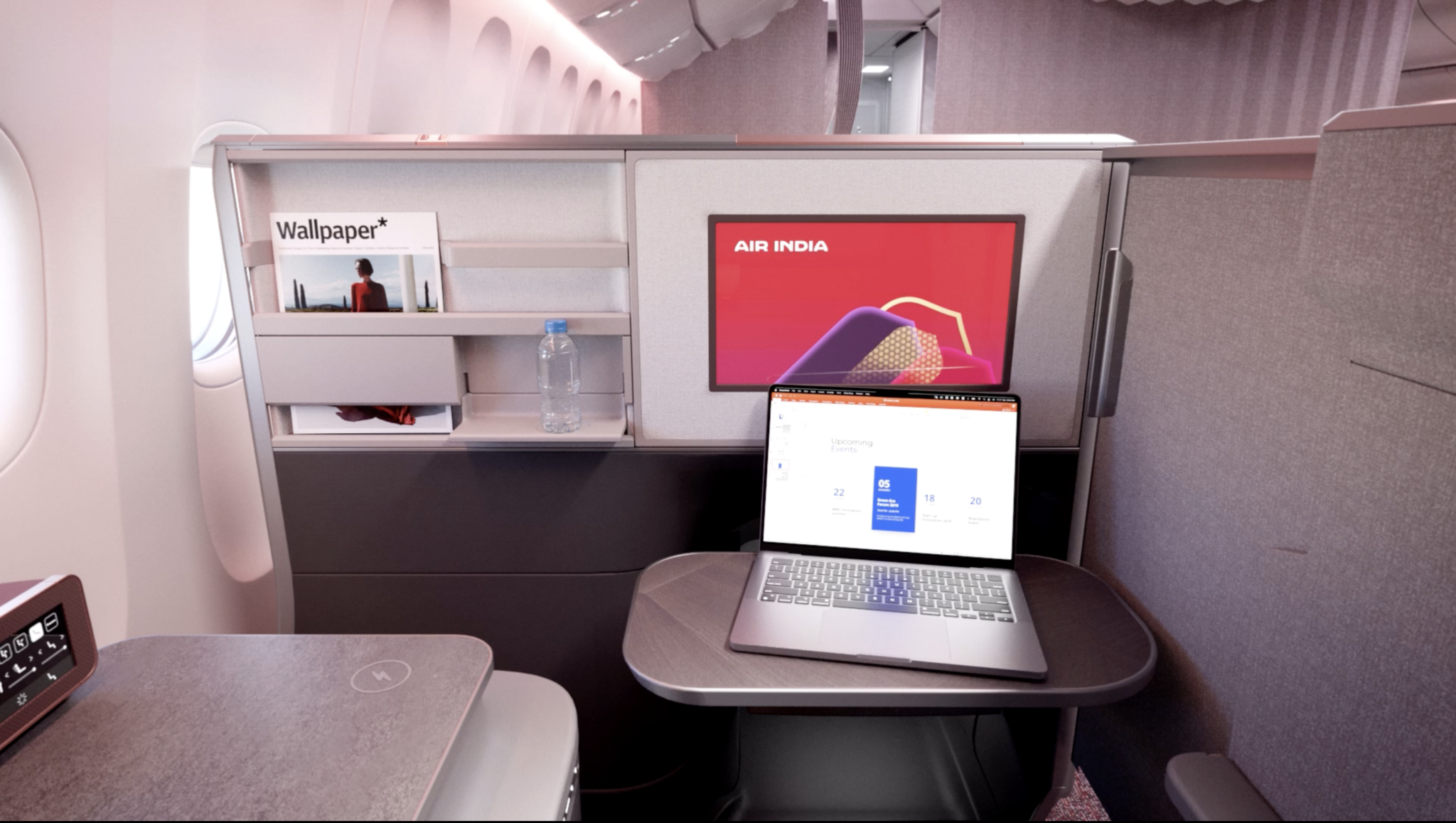Skift Take
Air India has opened its checkbook to offer a contemporary experience, one it hopes will dissuade passengers from flying one-stop via the Middle East or Far-East Asia when it is ready with its offering
Air India, under government control until 2022, has long had a problem with its interiors: Broken seats and dysfunctional in-flight entertainment topped the complaints.
When Air India was privatized, the government handed over the planes on an as-is basis. At the CAPA India Aviation Summit 2023, CEO Campbell Wilson told the audience how Air India had to resort to 3D Printing of small spare parts to keep the seats serviceable.
Now Air India is trying to fix all that.
The airline claims to have completed the refurbishment of 40% of the seats of the entire fleet (widebody and narrowbody). And it says it has restored 99% of the In-Flight Entertainment systems on its premium cabin inventory.
Air India has also decided to augment its fleet by leasing aircraft, and brought in improved interiors as a result.
In 2022, it signed a lease for five Boeing 777-200LR aircraft that had been a part of Delta’s fleet. Delta completed refurbishing its 777 fleet in 2019, even adding its Delta One business cabin, with doors. Delta decided to convert these to freighters when the pandemic struck. However, they have since been retrieved from storage, sent for maintenance and repainting in Singapore, and inducted into Air India’s fleet.
Air India is getting good reviews for the planes, some of which are already flying passengers from Mumbai and Bengaluru to the U.S.
Air India has similarly announced a lease of nine Boeing 777-300ER aircraft, which had been in service for Etihad or Singapore Airlines earlier. Overall, that’s 14 Boeing 777s that are leased and sport the cabins of other carriers but will fly for Air India.
In 2022, Air India announced it would spend $400 million on refurbishing its entire widebody fleet that it inherited during the privatization. However, details were light until last week.
The aircraft will add a premium economy cabin to these long-haul jets. Surprisingly, Air India has decided to retain the First Class Cabin in the refurbished version of its 777.
Air India did not have the lead time to design its own cabin product, so it is going with some off-the-shelf solutions for the refurbishment. A video of the new cabin walkthrough shows the latest developments. The video indicates the first- and business-class cabins will be based on a common platform, Safran’s Unity, which will also be used by Qantas on its Project Sunrise A350-1000 aircraft.
Air India’s First Class cabin onboard their refurbished 777s will have four seats in a 1-2-1 configuration. Each seat will have privacy doors, a widescreen, and an ottoman for comfort. The seat itself is fitted with ample storage options and inbuilt wireless charging.
In Business Class, Air India will replace their angled-flat offering with the same seat in a staggered layout, making room for 40 business class passengers in a 1-2-1 configuration over the current LOPA of 35 passengers in a 2-3-2 layout.
This will be a vast upgrade for those flying long-haul business with the airline.
The decision to keep a common seat for business and first would have been made with multiple considerations in mind.
It would help simplify the spares pool to be maintained for the equipment and also allow the airline to operate without a heavier seat in their top cabin. However, the service differentiation will determine if this is a true First Class experience or more like a Business Plus.
For the new Premium Economy cabin, Air India seems to have gone with Recaro’s PL3530 platform, which is the baseline for Emirates’ Premium Economy cabin and flies on Air India’s sister carrier, Vistara’s 787-9s. A 40-seat cabin, this one will come with more room and padding than Economy seats and a calf rest.
Economy class aboard Air India will get tighter for long-haul flights, with the airline moving to a 3-4-3 layout from the generous 3-3-3 earlier, and new seats from Recaro.
Overall, on the 777, while the number of passengers will remain approximately the same, the aircraft will now have a 25% premium capacity, compared to the earlier 13%. Apart from the aircraft being fitted with new seats, the airline will invest in in-flight Wi-Fi and offer in-flight entertainment with 1,700 hours of programming.
The airline mentions that the first of these jets will enter service in the second half of 2024. Air India will also start the induction of its six A350-900 aircraft from November 2023 onwards, with the other widebodies arriving 2025 onwards. Overall, the future looks like one where Air India passengers would look forward to their flight rather than go one-stop.
Skift India Report
The Skift India Report is your go-to newsletter for all news related to travel, tourism, airlines, and hospitality in India.
Have a confidential tip for Skift? Get in touch
Tags: air india, aircraft, aircraft interiors, cabin design
Photo credit: A business class cabin on an Air India jet Air India
